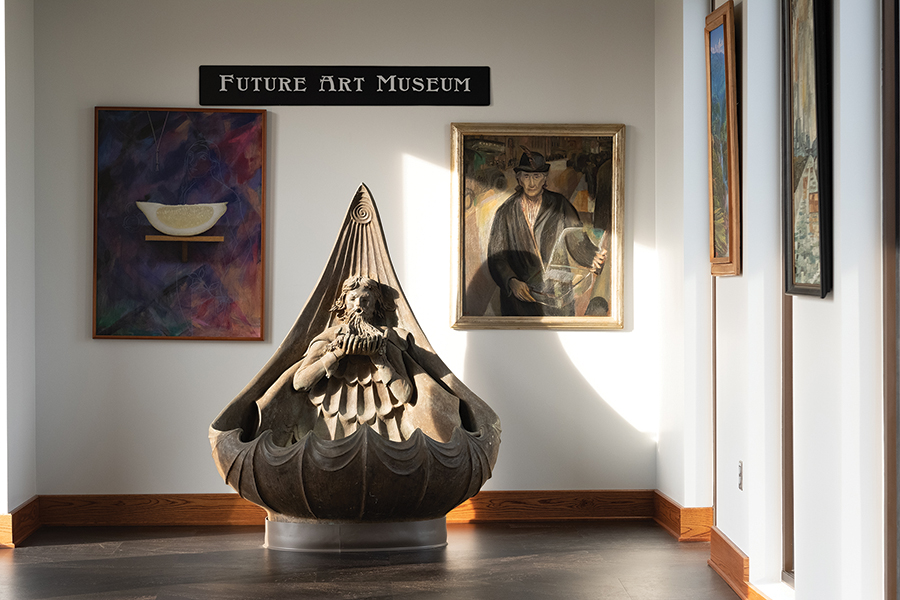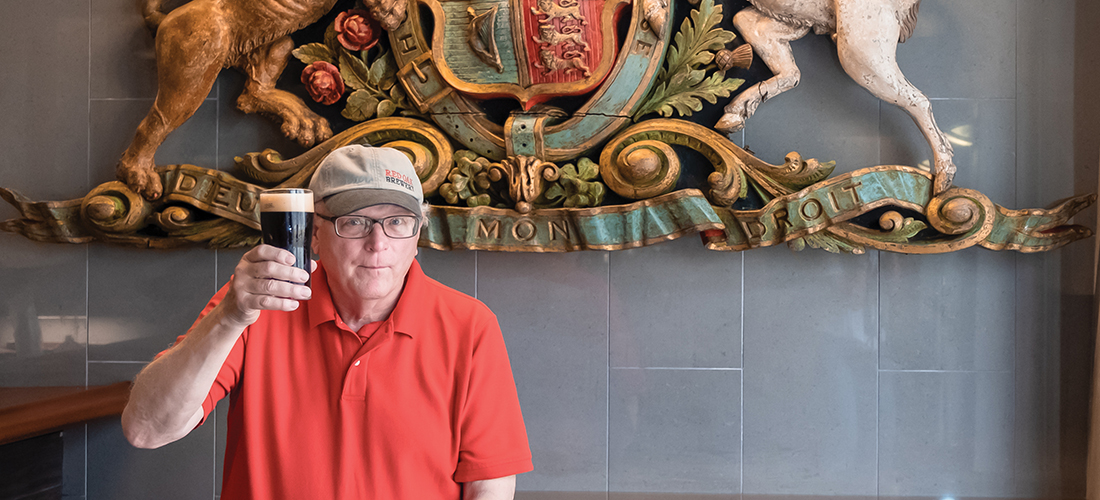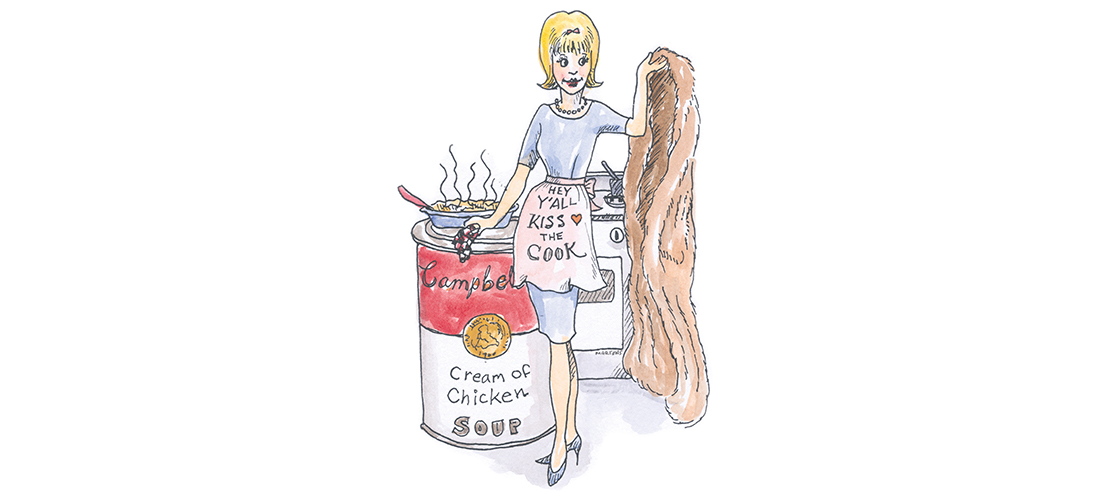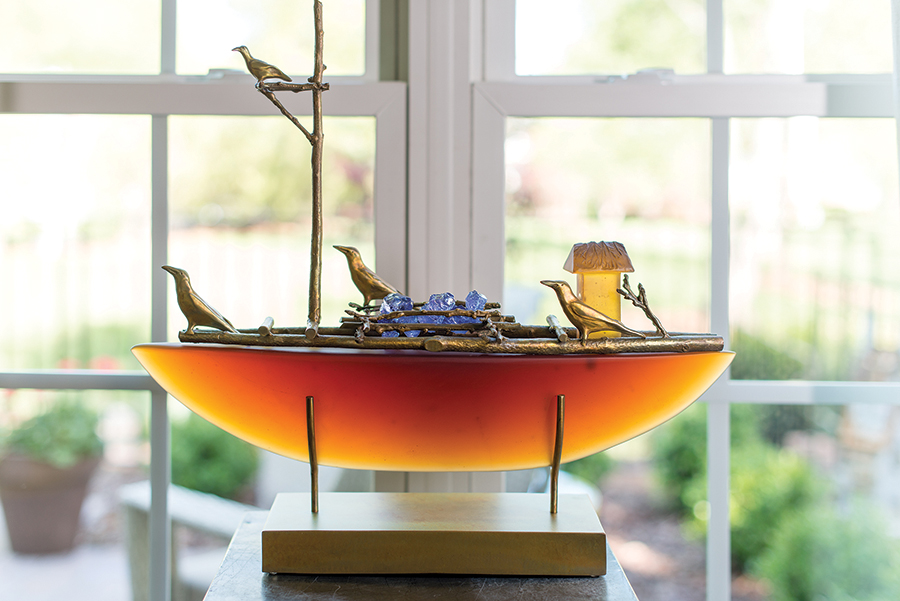Heart of Red Oak
Beer — and Bill Sherrill — are proof that God loves us and wants us to be happy
By Jim Dodson • Photographs by Laura Gingerich
On a recent warm spring Friday evening, the bar at Red Oak Brewery’s spanking new Lager Haus and its newly completed Biergarten are filled with happy customers and an air of cheerful gratitude that another workweek is in the books. It’s time to hoist a cold Red Oak or one of half a dozen house-crafted beers on tap to toast the start of a warm and welcome weekend.
At least that’s the feeling of the colorful owner and creator of this festive little piece of Munich, Germany — a pretty happy guy in his own right. Earlier in the day, Bill Sherrill, arguably one of the godfathers of artisan brewing in North Carolina, received some very good news about the future of crafted beer in the state.
A friend who works as a lobbyist in the North Carolina General Assembly phoned to let him know that a lengthy campaign led by Sherrill and other craft brewers to change a state law that prohibited them from producing and selling more than 25,000 barrels of beer without contracting with a wholesale distributor had succeeded.


Under the revised law, the state’s 200 craft brewers could now make and distribute 50,000 barrels on their own. It’s a victory not only for thirsty beer drinkers across the state but also a shot in the arm for smaller, independent craft brewers like Sherrill who’d essentially bumped up against the 25,000-barrel cap, limiting further growth without turning their beer over to a distributor, who probably wouldn’t keep, for instance, Red Oak refrigerated during transport as classic German lagers should be.
“It’s definitely a reason to celebrate because this will mean more jobs in the long run and be great for the state’s economy,” says a visibly pleased Sherrill. His illuminated sign by his Red Oak brewery hard by the southern flank of I-40/85 in tiny Whitsett has become something of a roadside icon and a growing attraction in recent years, underscored by the opening last fall of the brewery’s capacious Munich-style Lager Haus.
The aforementioned Biergarten, with its neat communal tables and fire pit beneath a grove of lacy bark elms, is simply the latest addition to meister Sherrill’s complex. Next up is a 10,000-square-foot office and art gallery that will showcase major North Carolina and Southern visual artists when completed sometime late this year or early next. In the meantime, his popular Lager Haus features its own eclectic works of art in the form of a 17th-century wedding settle (bench) that was given in 1640 to the Earl of Northumberland, a pair of royal family crests from England’s House of Windsor and the Royal House of Holland, a 500-year-old coat of arms from the German Millers Guild, oil paintings from ice skating legend Dick Buttons’ private collection, antiques and an illuminated “Burgie” (i.e. a vintage Burgermeister Beer sign) from the Sputnik years rotating over the bar.

“I found that during an art crawl 21 years ago in Scottsdale, Arizona,” relates Sherrill over the convivial din of his patrons. “Pretty special, isn’t it? It seems to make people happy. That’s the point.”
Indeed it seems to be one of many reasons the festive Lager Haus has become both a roadside destination and a routine gathering spot for everything from local civic groups to book clubs, family reunions and alumni evenings — even a Bible class that meets there every other Thursday.
“We have probably the widest range of patrons imaginable,” says director of customer services, Ashley Justice, with a laugh. “I’m talking about lawyers from Raleigh, college students and professors from Greensboro and Chapel Hill, business folks and Harley bikers.” Plus, she says, there are game boards for families, NASCAR on Sunday, musical Bingo on Wednesday evenings and trivia nights on Thursdays. “We host events for the sheriff’s department and local hospitals. This really is an Old World place where everyone feels welcome.”
Dogs are welcome too — treated to their own special watering holes — while gourmet food trucks feed their masters on a rotating basis. A highlight of this ongoing festive calendar is the gifted German oom-pah band that shows up annually to perform on weekends through Oktoberfest. Sherrill also plans to add an authentic Brat Stube (Kiosk) selling German sausage.
All three entities — craft brewery, Lager Haus and art gallery — are the kind of yeoman dreams Bill Sherrill has spent a career bringing to life. In 1979, Sherrill opened Franklins Off Friendly with a talented chef named John Berres and a charismatic young house manager named Dennis Quaintance, the three of them creating one of the Gate City’s hottest restaurants over the next decade and a half. From there, Quaintance went on to start a successful wine brokerage and later partnered with construction guru Mike Weaver to open Lucky 32 restaurant; the two would later bring a pair of award-winning luxury boutique hotels, the O.Henry and Proximity, to life.

“I can’t imagine what my life and many others would have been like without Bill,” says Quaintance, who met Sherrill when he was 17 and followed him east after working for him in hotels and restaurants in California and Seattle. “He is such an original thinker. For Bill, it’s not about the money. It’s about creating things that make people happy. Bill doesn’t conform to any formula. He is completely unconventional and creates what makes him happy and shares that with the people around him.”
In 1989, after expanding the footprint of Franklin’s to include a Top 100 wine cellar, Sherrill decided to shut it down and concentrate on making the kind of German lager he’d developed a taste for while attending high school in Switzerland and traveling around the world for a full year after finishing Duke University. He went on to earn a master’s degree in hotel management at Cornell University.
His quest to find the perfect brew and the kind of equipment that could make the Bavarian-style amber lager he had in mind took him on a tour of West Coast craft breweries and across Germany before he settled on equipment found at Chesapeake Brewing Company.
He brewed his first beer in 1990, selling it mainly for the next year through his small chain of bar and grills in Winston-Salem, Chapel Hill and Charlotte.
In 2008, Sherill opened his Red Oak Brewery on a patch of family land in Whitsett, officially the state’s second-oldest craft brewing company, with eight employees and an unpasteurized beer that was so fresh it required refrigeration at all times. Today, the brewery occupies close to 30,000-square-feet and is closing in on 70 full- and part-time employees who seem to find Sherrill’s take of the Golden Rule in management style agreeable. “We have just three rules,” he notes — “Be honest, work hard and treat the customers the way you would want to be treated.”
His eight different beers are distributed as far west as Boone and Morganton, as far east as Little Washington and Calabash.
When it eventually opens, Red Oak’s art gallery will not only house a bounty of original works Sherrill has collected over decades from North Carolina and Southern artists, but also works he’s brought home from some of the 95 foreign countries he’s visited over the past half century. Among other things, he hopes the gallery will also serve as a place for seminars and round tables on the arts.

“I know it’s kind of crazy,” Sherrill allows while sharing a brew with several of his old friends from college days at Duke. “I mean, who would spend this kind of money on good beer and great art?”
He knows the answer to his own question, of course.
“Here,” he says with the Old World charm of a proud Biermeister. “It’s been a long week. Have another beer and relax.” OH
Jim Dodson’s antidote to the brouhaha of publishing is a brew-ha-ha with one of Bill Sherrill’s craft beers.




















